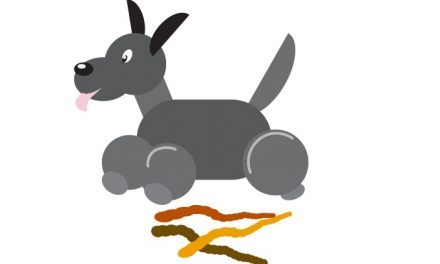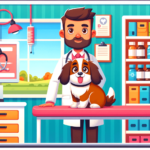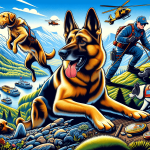Anal sacs, commonly dubbed as anal glands, are small sacs containing glandular tissues. As the name suggests, they are located below the butt of the canine at 4 o’clock and 8 o’clock positions around the anus.
These oil and sweat factories cause a musky, unpleasant smell. The yellow skanky fluid stored within travels through the anal duct and comes of the anus. Needless to say, it drops out along with poop. It marks the scent for other canines to follow suit and poop in the same place.
Anal sac problems don’t seem to be related to gender or age. However, they are much more likely to occur in small breeds rather than large ones. They are more common in dogs than in cats. Anal sacs become an issue when they remain filled.
Purpose of Anal Sacs in Dogs
Anal sacs are territorial scent markers, employed to assert ownership of the area. Trespassing dogs catch the scent and realize they are in someone else’s territory. The intruder then decides between fight or flight. The scent can also indicate the dog’s stress, health and wellness.
According to one interesting theory, anal sac fluid helps lubricate and excrete hard stool. However, such theories are questioned time and again.
Some of our furry friends are also sprayers. Like skunks, some species can propel odor from their anal sacs to guard themselves and their packs from predators and other attackers. Hence, it is speculated that anal glands are vestigial anatomical organs inherited from ancestors. There is no empirical proof to support this claim, but there is nothing to rule out such theories altogether.

Does Your Dog Suffer from Anal Sac Disease?
When your dog is suffering from oversized anal glands, they are probably impacted. They might scoot over their butt to feel better. When the glands are on the verge of rupture, your pet might even lick it to subdue the burning sensation.
The inflammation that follows impaction doesn’t help either. Hence, when your dog is scooting across the carpet or licking its back regularly, it’s time to make an appointment with the vet. Your pet could be suffering from anal sac conditions, allergies or parasites.
When the dog is showing clear signs of anal sac issues, the vet will have to do a rectal exam. It is to see if they can feel enlarged anal glands. The vet or nurse will use gloves and lubrication to examine your dog comfortably. The anal sacs are generally between the sizes of a pea and grape, so the vet can feel oversized sacs straight away. Alternatively, you can feel the anal sacs over the skin, but you might be deceived because of the fur and fats.
How Anal Sacs Affect Dogs?
When the duct to the anus experiences blockage, it causes impaction. Even worse, impaction leads to infection. In effect, anal infection means allergies, inflammation and a whole lot of pain. Impacted anal sacs can cause abscesses, which will painfully tear through the skin. It is how anal sacs drain the hard way.
Prevention of Enlarged Anal Sacs in Dogs
Prevention of enlarged anal sacs depends on the cause of the problem. Increasing fiber content in the diet and including supplements specifically designed for this purpose can help create hard stools. Hard stool presses against the sides of the colon and empties out the anal sacs. Therefore, it prevents the chances of an impaction.
However, if your pet is suffering from allergies, keeping allergies under control is the way to go. Exercise also increases the production of stools, so make sure your pet gets a lot of exercises.
What Is ‘Impaction’ and ‘Expressing’?
Fluids in anal sacs are squeezed out whenever a dog goes to the loo. Problems arise when the fluids are not completely emptied. The leftover fluid gets too dry and thick that it blocks the anal opening. This condition is what we call impaction.
Fortunately, impactions can be easily addressed by the vet. You can empty or, in other words, express the sacs with your fingers. Expressing anal sacs will save a few trips to the vet.
Expressing Anal Sacs in Dogs
Some pets can benefit from regular anal sac expression. An experienced veterinarian should be able to teach you how to do it at home, though most dog owners are more than happy to let professionals handle it. Most consider expressing anal sacs to be a bit gross. The decision to take the DIY route or using the services of a veterinarian is entirely up to you. Pet grooming spas offer to do this, but you should ensure there is a vet stationed there.
In extreme medical conditions, surgical removal is the only option. However, severe complications may arise out of the surgery. That’s why it’s not something you hear so commonly and is only an option when there’s no other way.
Conclusion
Anal sacs are a delicate and troublesome part when it comes to pet care and grooming. Any issue related to it should be addressed by a certified veterinarian. In a few dogs, expressing anal sacs regularly is a must. Otherwise, they cause impaction, which is painful for your pet. There are a few key symptoms of anal sac disease, but regular visits to the vet will keep you updated on its status. This post intends to emphasize the anal sac issues so that you can keep a vigilant eye.









